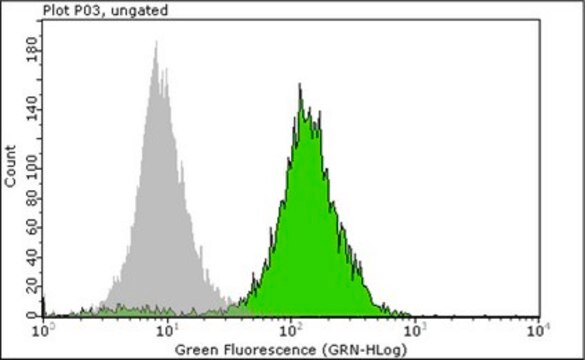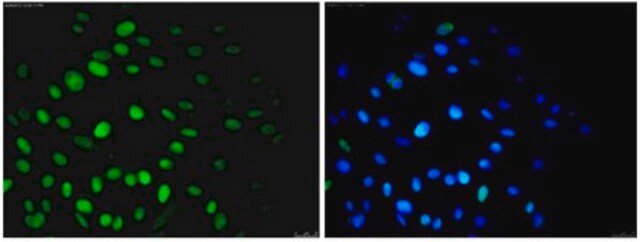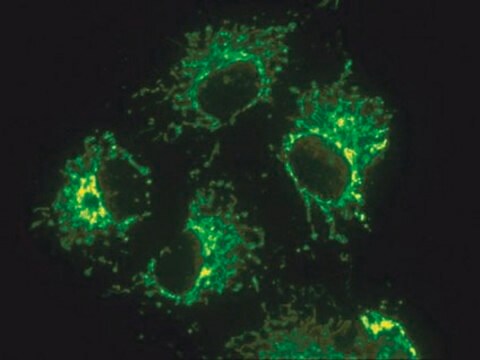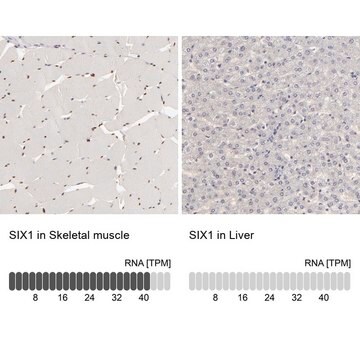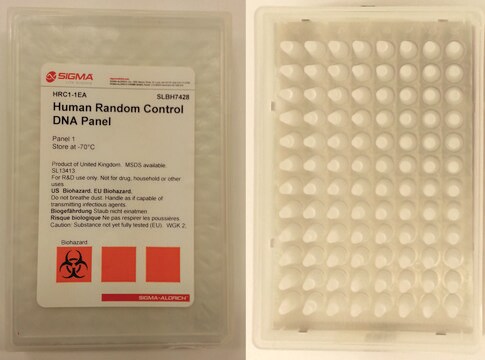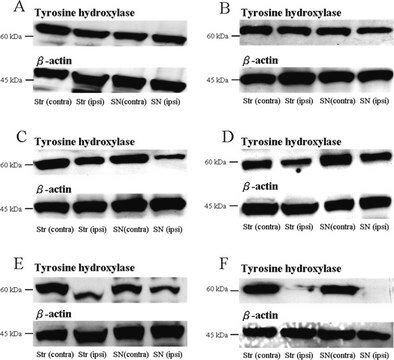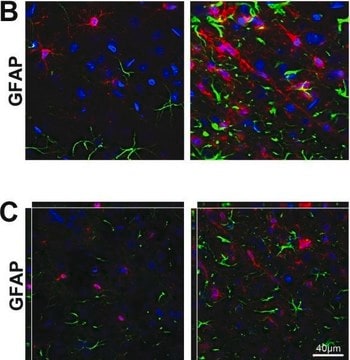MAB1281
Anti-Nuclei Antibody, clone 235-1
clone 235-1, Chemicon®, from mouse
Synonim(y):
HuNu
About This Item
Polecane produkty
pochodzenie biologiczne
mouse
Poziom jakości
forma przeciwciała
purified from hybridoma cell culture
rodzaj przeciwciała
primary antibodies
klon
235-1, monoclonal
reaktywność gatunkowa
human
producent / nazwa handlowa
Chemicon®
metody
immunocytochemistry: suitable
immunohistochemistry: suitable (paraffin)
immunoprecipitation (IP): suitable
moc wejściowa
sample type neural stem cell(s)
izotyp
IgG1
Warunki transportu
dry ice
docelowa modyfikacja potranslacyjna
unmodified
Opis ogólny
Specyficzność
Zastosowanie
Postać fizyczna
Przechowywanie i stabilność
Komentarz do analizy
All human cell types
Informacje prawne
Oświadczenie o zrzeczeniu się odpowiedzialności
Nie możesz znaleźć właściwego produktu?
Wypróbuj nasz Narzędzie selektora produktów.
polecane
Kod klasy składowania
12 - Non Combustible Liquids
Klasa zagrożenia wodnego (WGK)
WGK 2
Temperatura zapłonu (°F)
Not applicable
Temperatura zapłonu (°C)
Not applicable
Certyfikaty analizy (CoA)
Poszukaj Certyfikaty analizy (CoA), wpisując numer partii/serii produktów. Numery serii i partii można znaleźć na etykiecie produktu po słowach „seria” lub „partia”.
Masz już ten produkt?
Dokumenty związane z niedawno zakupionymi produktami zostały zamieszczone w Bibliotece dokumentów.
Klienci oglądali również te produkty
Produkty
Przeciwciała łączą się z określonymi antygenami w celu wytworzenia ekskluzywnego kompleksu przeciwciało-antygen. Dowiedz się więcej o naturze tego wiązania i jego wykorzystaniu jako znacznika molekularnego w badaniach.
Poznaj różnice między przeciwciałami monoklonalnymi i poliklonalnymi, w tym sposób generowania przeciwciał, numery klonów i formaty przeciwciał.
Immunofluorescencja wykorzystuje cząsteczki fluorescencyjne sprzężone z przeciwciałami do lokalizacji białek, potwierdzania modyfikacji i wizualizacji kompleksów białkowych.
Derivation and characterization of functional human neural stem cell derived oligodendrocyte progenitor cells (OPCs) that efficiently myelinate primary neurons in culture.
Nasz zespół naukowców ma doświadczenie we wszystkich obszarach badań, w tym w naukach przyrodniczych, materiałoznawstwie, syntezie chemicznej, chromatografii, analityce i wielu innych dziedzinach.
Skontaktuj się z zespołem ds. pomocy technicznej